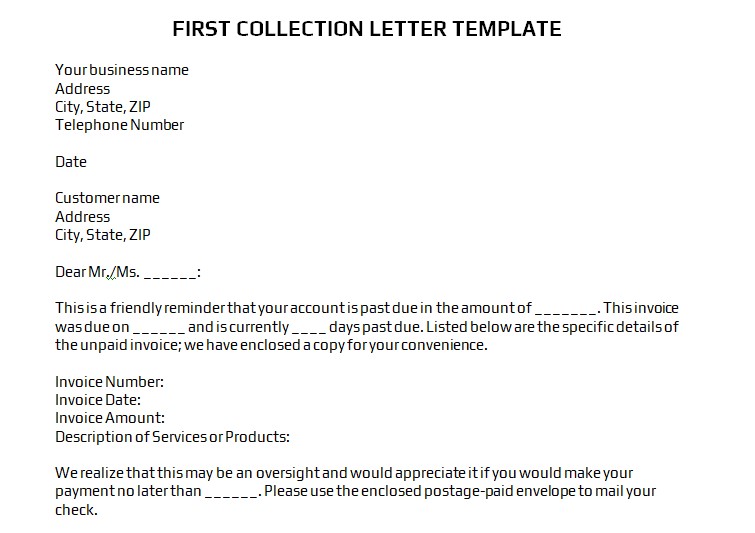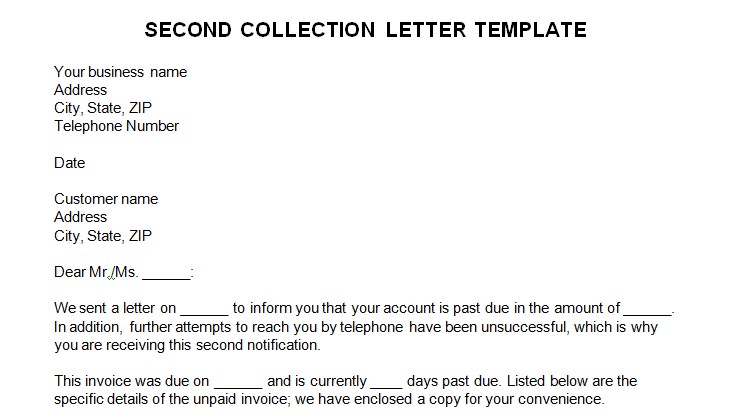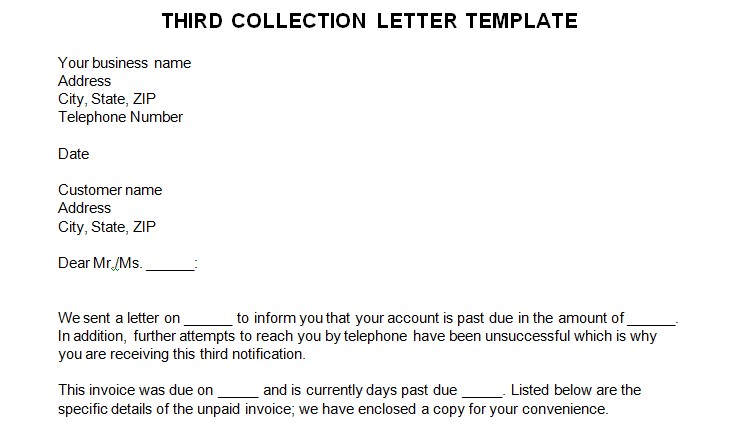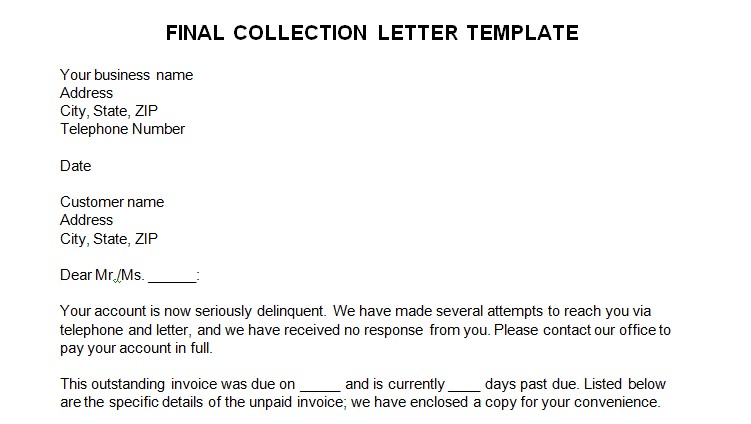Writing a collection letter requires you to follow the right steps and use proper tone and language in your letter. When creating your letter, make sure that it’s concise and to the point, and include all the necessary information, such as the purpose of your letter, a summary of outstanding invoices, and acceptable payment methods. Writing effective collection letters is an important part of extending credit to customers and a best practice for managing accounts receivable (A/R). Typically, you should send out four letters before resorting to a collection agency.
For your convenience, we’ve provided a series of free collection letter templates, which you or your bookkeeper can download and customize with your company logo, mailing address, and other essential information.
Need help with collection letters? Download our four collection letter templates.
Let’s look at the essential best practices necessary for writing a collection letter:
- Keep it short and to the point; don’t use complicated language
- Mention your contact information, including phone number, email address, and mailing address
- Type the letter; don’t handwrite it
- Use company letterhead
- Include a copy of the invoice or a summarized statement for multiple outstanding invoices
- Indicate a specific date the account should be made current, such as “payment should be made no later than April 17,” as opposed to “payment should be made within seven business days”
- Mention acceptable payment methods like check, credit card, and debit card
- Use a postage-paid envelope so they can drop a check in the mail easily
Main Features of Collection Letters
Collection letters have certain features that make them unique from other types of business letters, such as:
- The parties involved: The letter should include the name and address of the seller and the buyer who purchased on credit.
- Objective: The main objective is to remind the customer that their balance is past due and should be settled as soon as possible.
- Series of letters: Collection letters should be written and sent out in a series as needed.
- Reference to the previous letters: When composing the second, third, and final collection letter, make sure to include a reference to the earlier letter.
- Language: It’s important that the letter is written in a polite, straightforward, and professional manner.
4 Types of Collection Letters
Typically, you’ll send your customer a series of four collection letters before hiring a collection agency or recording a bad debt expense.
The first collection letter should be mailed only after you have tried asking for payment in an email or telephone call. If you’re a QuickBooks Online user, you can email an invoice to your customer to facilitate easy payment. If you need help sending emailed invoices in QuickBooks, read our guide on how to create and send invoices in QuickBooks Online.
If the customer hasn’t made payment arrangements with you after contacting them via telephone and email, you should mail the first collection letter. In general, this should be no later than 14 days after the invoice due date.
When To Hire a Collection Agency
After multiple attempts to collect on a delinquent account with telephone calls and letters fail, you should consider hiring a collection agency. One thing to keep in mind is that, once you hire a collection agency, you won’t receive the full amount that is owed to you. Generally, collection agencies charge between 25% and 45% of the total amount to be collected. Depending on the amount of the outstanding debt, this may not be worth hiring a collection agency for.
Choosing To Write the Account Off as Bad Debt
If you decide to just cut your losses and not hire a collection agency, you should go ahead and write the account off as bad debt. This will at least allow you to claim a tax deduction for the amount owed to you if you’re an accrual-basis taxpayer.
Frequently Asked Questions (FAQs)
Why do you need a collection letter?
A collection letter is proof that you have attempted to collect what a customer owes you. In case it escalates to a collection suit, the collection letters will be considered as hard evidence that your business tried to reach out to the customer.
How to send collection letters?
You can send collection letters via post mail or email. For speed and convenience, we recommend sending via email.
Bottom Line
We hope that with this guide, you have learned how to compose an effective collection letter, which can help you get paid while maintaining a positive relationship with the customer. As you have observed from our free templates, the key is to keep it professional and to the point.




